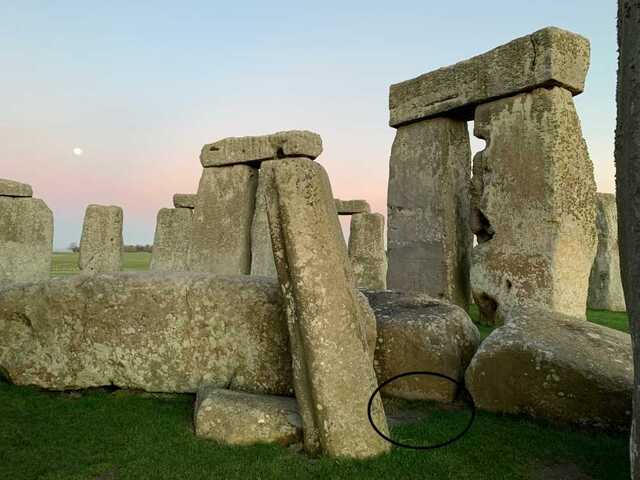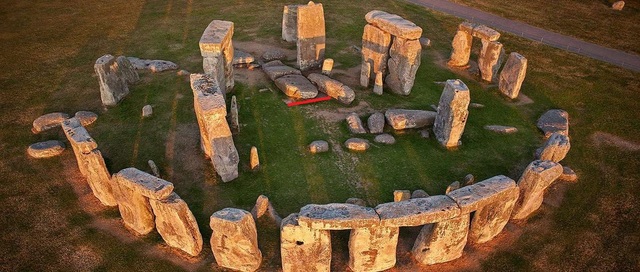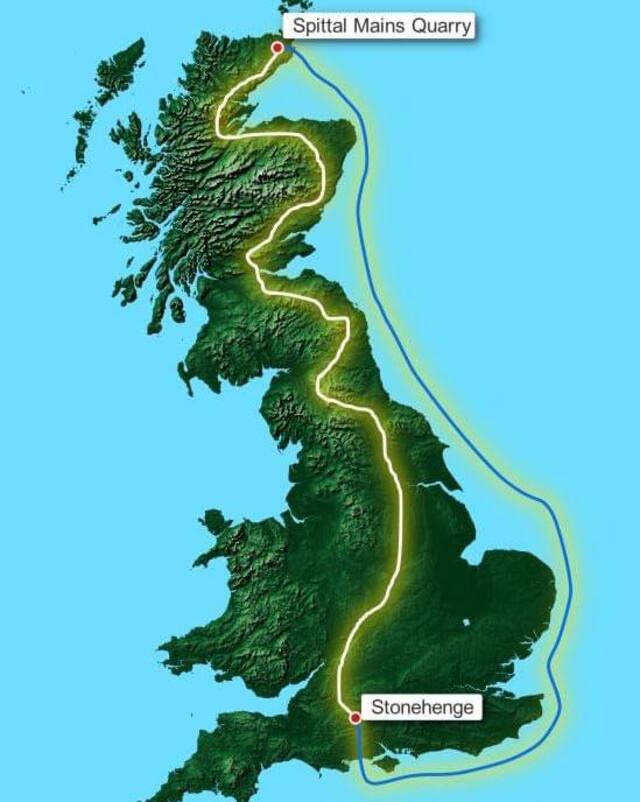The Altar Stone of Stonehenge, a six-ton megalith at the heart of one of the world’s most famous monuments, has long fascinated researchers and the public alike. Recent discoveries revealing its origins in Scotland, over 750 kilometers from Stonehenge, have only deepened the intrigue surrounding this ancient marvel. The journey of the Altar Stone is not only a testament to the ingenuity and determination of Neolithic societies but also to their surprisingly advanced transport methods and organizational capabilities.
Stonehenge: A Marvel of Ancient Engineering
Stonehenge, located in Wiltshire, England, is one of the most iconic symbols of human ingenuity and ancient engineering. Constructed over several millennia, the monument underwent multiple phases of building, with the Altar Stone placed during the third phase around 2,600 BCE.

At the center of the monument, the Altar Stone occupies a critical position, highlighting its significance in the rituals and ceremonies of its time. Stonehenge itself has been the subject of endless speculation, with theories ranging from celestial observatories to burial grounds. However, the Altar Stone’s recent identification as originating from Scotland adds a new layer of complexity to its story, revealing a tale of long-distance transport that defies conventional assumptions about Neolithic capabilities.
The Scottish Origin: Unraveling the Altar Stone’s Mystery
For decades, it was widely believed that the Altar Stone, like many of Stonehenge’s other stones, originated from Wales. However, groundbreaking chemical analysis conducted by researchers at Curtin University in Australia has revealed a different story. The team analyzed the mineral composition of the Altar Stone, finding that its chemical fingerprint closely matches rocks found in the Orcadian Basin of Scotland, over 750 kilometers away.
This discovery not only overturned the previous theory of a Welsh origin but also raised fascinating questions about how and why such a massive stone was transported such a long distance. As study co-author Dr. Robert Ixer put it, the findings are “genuinely shocking,” prompting researchers to rethink their understanding of Neolithic Britain’s technological and societal advancements.

The 750-Kilometer Journey
Transporting a six-ton stone overland and by sea 5,000 years ago would have been an extraordinary challenge. Neolithic builders lacked the heavy machinery we rely on today, relying instead on ingenuity and collaboration.
Researchers believe the Altar Stone’s journey likely involved both overland transport and marine shipping. Along the rugged coastline of Britain, Neolithic societies may have utilized rudimentary boats or rafts to move the stone southward. Once on land, wooden rollers, sledges, and manpower would have been employed to drag the massive stone to its final destination.
The logistics of such an endeavor suggest an advanced level of societal organization. Coordinating the resources, labor, and planning required to transport the Altar Stone points to a network of skilled individuals and a highly collaborative society, far more advanced than previously thought.
Advanced Neolithic Transport Methods
The discovery of the Altar Stone’s Scottish origin shines a light on the technological ingenuity of Neolithic societies. While heavy machinery and modern tools were centuries away, these ancient builders managed to transport massive stones over great distances, a feat that rivals the engineering of the Egyptian pyramids.
The transport of the Altar Stone reflects the existence of long-distance trade networks, with Neolithic communities sharing knowledge and resources across vast regions. This level of connectivity and cooperation challenges traditional assumptions about the isolation of ancient societies.
Comparisons to other ancient monuments, such as Göbekli Tepe in Turkey and the Great Pyramids of Egypt, highlight the global phenomenon of early societies achieving remarkable feats of engineering and organization, often without leaving written records behind.

The Role of the Altar Stone in Stonehenge
Once it arrived at Stonehenge, the Altar Stone was positioned at the monument’s center, underscoring its importance in Neolithic rituals. Its massive size and unique origin suggest it held symbolic significance, perhaps representing a connection to distant lands or a marker of the builders’ technological prowess.
Theories about the Altar Stone’s role in Stonehenge range from its use as a platform for ceremonial offerings to a focal point in spiritual or astronomical rituals. Whatever its purpose, the central placement of the Altar Stone indicates that it was a key element in the monument’s design and function.
Fascinating Questions Still Unanswered
Despite the groundbreaking discoveries about the Altar Stone’s origins, many questions remain unanswered. Why did the builders of Stonehenge choose to transport a stone from such a distant location? Was it for its unique properties, symbolic value, or a connection to the land of its origin?
The logistics of the journey also remain a puzzle. How did Neolithic societies overcome the challenges of moving such a massive stone across mountains, rivers, and open sea? What does this achievement reveal about the social, political, and economic structures of the time?

Preserving the Altar Stone’s Legacy
Today, the Altar Stone remains a central feature of Stonehenge, drawing visitors from around the world to marvel at its size and the story it tells. Ongoing research, including efforts to pinpoint the exact quarry in Scotland where the stone originated, ensures that the legacy of this ancient artifact continues to unfold.
The study of the Altar Stone not only deepens our understanding of Stonehenge but also highlights the ingenuity and resilience of Neolithic societies. As researchers uncover more about its origins and journey, the Altar Stone serves as a powerful reminder of the achievements of our ancient ancestors.
Today, the Altar Stone remains a central feature of Stonehenge, drawing visitors from around the world to marvel at its size and the story it tells
Conclusion
The journey of Stonehenge’s Altar Stone is a story of human ingenuity, determination, and collaboration. From its origins in Scotland to its central placement in one of the world’s most famous monuments, the Altar Stone embodies the spirit of a society that overcame immense challenges to achieve something extraordinary.
As research continues to shed light on its history, the Altar Stone remains a symbol of the Neolithic builders’ advanced knowledge and organizational skills. Its story inspires us to look back in awe at the achievements of our ancient ancestors and forward with curiosity about the mysteries still waiting to be uncovered.
